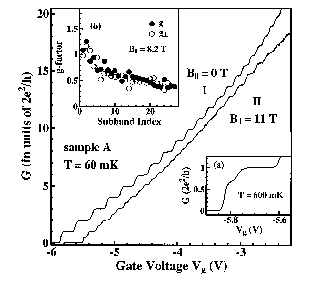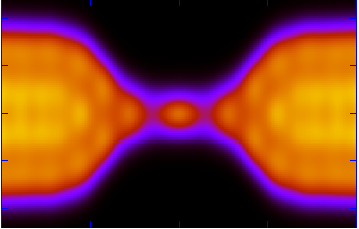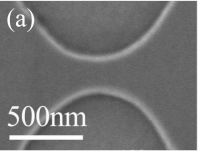Solving the "0.7 Anomaly"
Yigal Meir
The simplest nanoelectronics device, and the basic building block for more complicated devices, is a "quantum point contact," a constriction connecting large electron reservoirs (see picture on the right). According to quantum mechanics the conductance through such a device should increase as the gap grew bigger by integer steps of universal value. Surprisingly, an additional first step approximately 0.7 times the expected universal value had also been observed, which became known as "the 0.7 anomaly" (see picture on the left). Previously we demonstrated that the phenomenology of this anomaly can be explained by the existence of a magnetic impurity, a localized electron in the quantum-point contact PRL 89, 196802 (2002). Using extensive density-functional calculations we demonstrated impurity.png the emergence of a magnetic impurity at the quantum point contact (see picture on the right) because a lower density of the electrons near the quantum point attracts the other electrons towards it. The wavy nature of such electrons then causes ripples, trapping an electron and causing the 0.7 anomaly.
 |
 |
 |
- Further reading:
- Magnetic impurity formation in quantum point contacts (Nature, 2006)
- Article is News and Views in Nature Physics
- Making the paper (Nature, 2006)